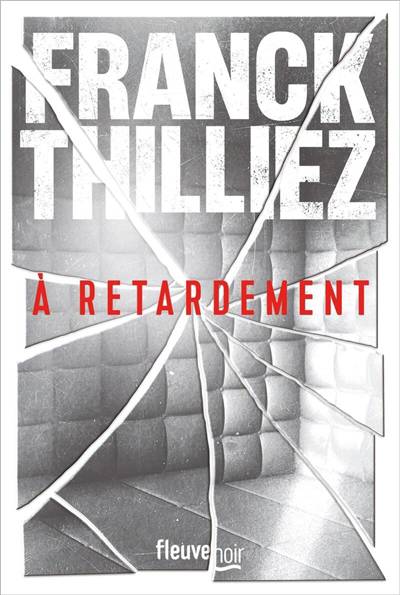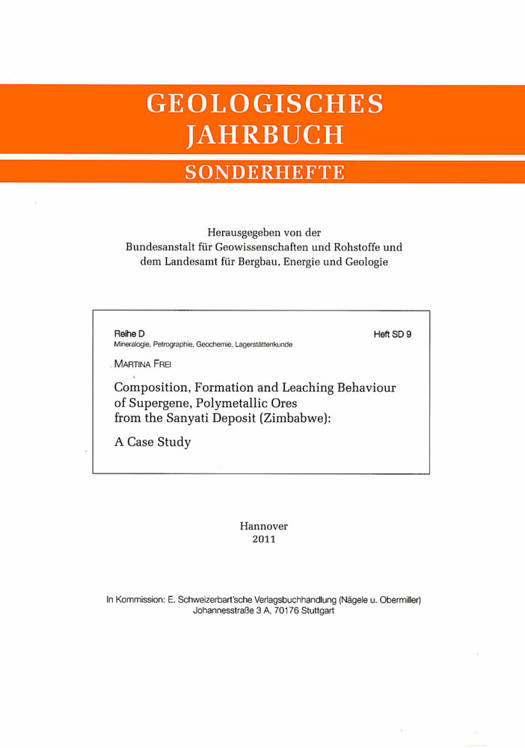
- Retrait gratuit dans votre magasin Club
- 7.000.000 titres dans notre catalogue
- Payer en toute sécurité
- Toujours un magasin près de chez vous
- Retrait gratuit dans votre magasin Club
- 7.000.0000 titres dans notre catalogue
- Payer en toute sécurité
- Toujours un magasin près de chez vous
Composition, Formation and Leaching Behaviour of Supergene, Polymetallic Ores from the Sanyati Deposit (Zimbabwe)
A Case Study
Martina Frei
39,45 €
+ 78 points
Description
Copper is won from the supergene ore of the polymetallic Sanyati deposit in north-western Zimbabwe in a heap leaching?solvent extraction ? electrowinning (HL ? SX?EW) process. However, copper recovery is below expectations. The composition, formation and leaching behaviour of the supergene ore was therefore studied using mineralogical (optical microscopy, SEM, XRD), geochemical (XRF, EMPA, AAS, ICP ?OES, LA? ICP ?MS), and experimental methods in order to unravel the processes responsible for unsatisfactory copper recovery. The supergene ore bodies of Sanyati developed in a warm humid climate since the Miocene (LISTER 1987) and began to form inselbergs during the Pliocene erosion cycle. The ore bodies represent an immature and therefore very heterogeneous oxidation zone with rudimentary secondary sulphide ore lenses developed at its base. Beside physical (unfavourable grain size distributions) and technical (high compaction of the heap leach pad) aspects, the textural and mineralogical characteristics of the ores lead to metal retention during the heap leaching process. Significant amounts of copper (and other base metals) are retained by the formation of iron oxides and iron oxy-hydroxides (primarily goethite and haematite), which are ubiquitous in the supergene ore. These "invisible" base metal levels are significantly higher compared to those reported from other deposits (SCOTT 1986, 1992). The observed distributions of base metals (and miscellaneous other elements) in goethite- and haematite-rich decay textures of sulphide minerals demonstrate that they do not contain a geochemical fingerprint of their precursor sulphide phase. Goethite-rich areas of the decay texture are generally enriched in copper (Cu), zinc (Zn) and arsenic (As), as well as selected trace elements (gallium (Ga), germanium (Ge), selenium (Se), silver (Ag), cadmium (Cd) und antimony (Sb)) and are depleted in lead (Pb) compared to haematite-rich areas. The base metal content of goethite and haematite is in the same range in run-of-mine ore and ore from the heap leach pad that has been leached for several years. Extraction experiments on run-of-mine ore show that 19 % of Cu and 6 % of Zn are adsorbed to the surfaces of limonite phases. The remaining 81 % of Cu and 94 % of Zn are fixed in the lattices of limonite phases (predominantly goethite and haematite). Leaching and adsorption experiments show that these phases remain partly undissolved under the conditions used on the heap leach pad (H2SO4, pH 1.5 ? 2). Limonite phases reprecipitate from the dissolved component and coprecipitate base metals that are therefore lost as an output of the leaching process.
Spécifications
Parties prenantes
- Auteur(s) :
- Editeur:
Contenu
- Nombre de pages :
- 227
- Langue:
- Anglais
- Collection :
- Tome:
- n° 9
Caractéristiques
- EAN:
- 9783510959921
- Format:
- Livre broché
- Dimensions :
- 210 mm x 300 mm
- Poids :
- 750 g

Les avis
Nous publions uniquement les avis qui respectent les conditions requises. Consultez nos conditions pour les avis.






